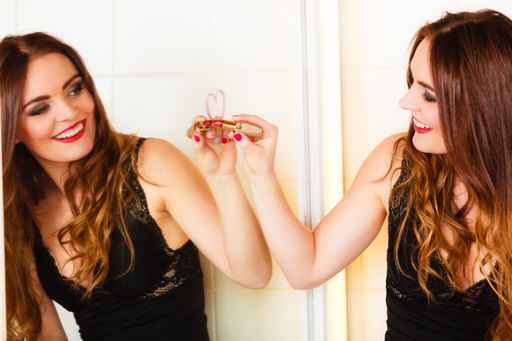 The term “Beauty Self-Esteem” isn’t widely used, but it helps us communicate the distinction between attractiveness and beauty. Attractiveness being our outward appearance as perceived by others. Beauty being more of an inward quality as perceived by ourselves.
The term “Beauty Self-Esteem” isn’t widely used, but it helps us communicate the distinction between attractiveness and beauty. Attractiveness being our outward appearance as perceived by others. Beauty being more of an inward quality as perceived by ourselves.
I read a brilliant article by Psychology Today that brings this idea to life and gives 3 ways to increase your beauty self-esteem. Click here to read the entire article.
3 Steps to Increase Your Beauty Self-Esteem
First Exercise
Cognitive Belief: People tend to believe that beauty is based on a reality created by others. The truth is that you can learn to define your self-image based on your own criteria rather than the reality created by your culture.
Behavior Pattern: Write down three physical features and three aspects of your personality that you like most. If you have a hard time coming up with any, try thinking of the features you are least critical of. For example, it could be, “I work hard, I like my eyes, I am honest, I am a loyal friend, I’m a good athlete and I have thick hair.” Now put your list in order of importance and elaborate by writing one sentence about each aspect on your list.
Second Exercise
Cognitive Belief: Looks matter to most people, but many confuse attractiveness with perfection. Although no one truly looks perfect all the time in every way, it is a belief supported by our media-driven culture. We all have bad hair days, blemishes, bloating, etc., but airbrushing and Photoshop can magically make them disappear. You can learn to hold on to your “imperfect” core self-image — the sense of yourself that remains stable regardless of imperfections — by acknowledging that variability is an inherent aspect of true attractiveness.
Behavior Pattern: This exercise focuses on your physical features. Write down three that you believe are most appealing to you. Again, if you find this difficult, chose the three features you find least unappealing or ones that others tell you are appealing to them. For example you might chose your curly hair, green eyes and white teeth. Describe each feature in a sentence, like, “My white teeth are attractive, especially when I smile.” Use these to begin to identify the core of your beauty self-esteem.
Third Exercise
Cognitive Belief: We are our own worst critics. Few people find as many faults with their appearance as we do. We can change the way we talk to ourselves by replacing negative thoughts and inaccurate “internal dialogues” with more positive, realistic ones.
Behavior Pattern: Look at yourself in the mirror and then listen to the words that come into your head. Ask yourself: Is the tone critical? Do the words remind you of anyone or sound similar to those your mom once said? Your dad? Siblings? Schoolmates? Then question the validity of these words. Are they really accurate? For example, do thick eyebrows truly make you look unattractive? Do the extra five pounds you carry mean you are fat? Now rewrite these dialogues as if you were talking to your friend, sister or daughter. If a friend asked you how she looked, what tone would you use? Look in the mirror and use that tone in an internal dialogue you have with yourself.
The article by Psychology Today also gives expected change that you can expect to see with each exercise.
Here’s to the beautiful you!

 Is Happiness A Pursuit or A Decision?
Is Happiness A Pursuit or A Decision?  Don’t Love to Be Loved
Don’t Love to Be Loved  How to Love Yourself First
How to Love Yourself First  The 3 Gifts of Cancer
The 3 Gifts of Cancer